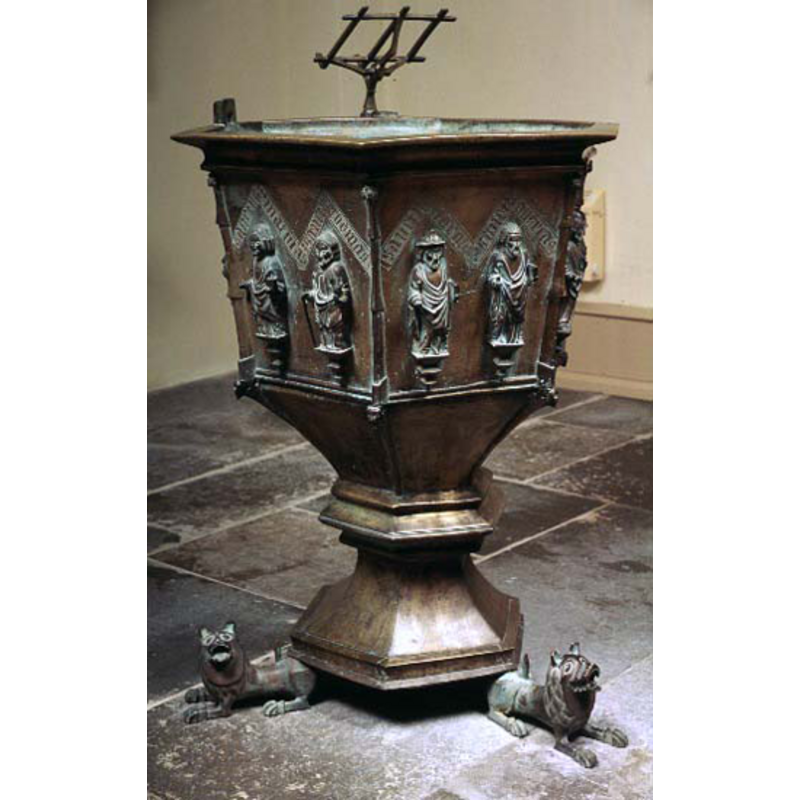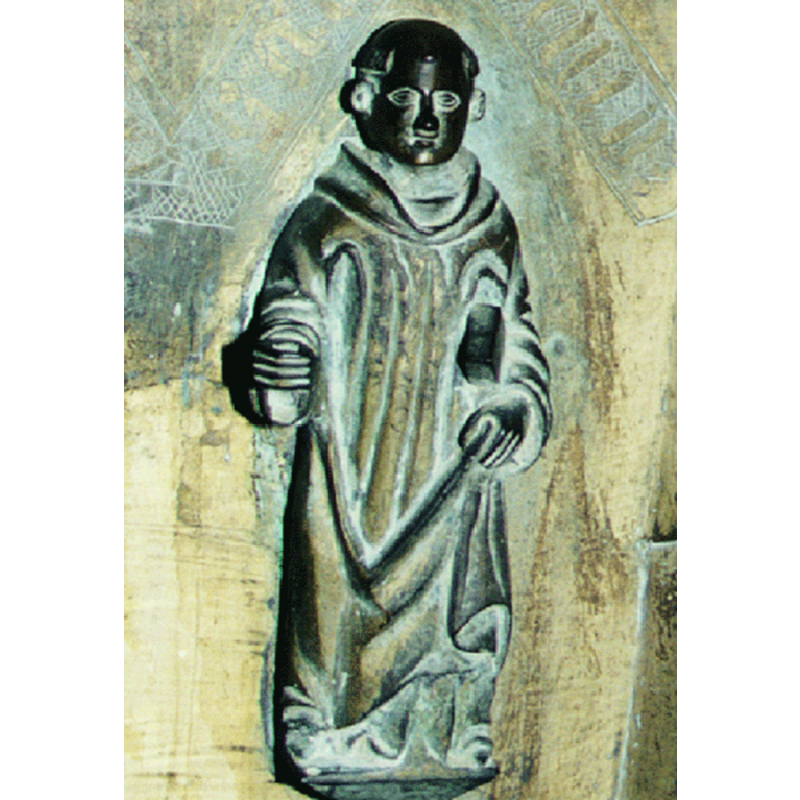Munktorp

Image copyright © Historiska museet, 2003
CC-BY-NC-ND-4.0
Results: 5 records
R01: design element - motifs - moulding
Apostle or saint - St. David of Munktorp
Scene Description: David av Munktorp is said to have been a Cluniac monk originally from Yorkshire, England, who was a missionary in Sweden in the early 11th century and became the first bishop of the diocese of Västerås, in Västmanland
Copyright Statement: Image copyright © [in the public domain]
Image Source: digital photograph taken 6 November 2004 by Klafui [http://en.wikipedia.org/wiki/File:David_Munktorp.gif]
Copyright Instructions: Released by the author into the pubic domain
Apostle or saint - saint - 12
view of church exterior - southeast view
INFORMATION
FontID: 17263MUN
Object Type: Baptismal Font1
Church/Chapel: Munktorps kyrka [the original Davidskyrkan is mid-11th century]
Church Patron Saints: St. David of Munktorp [David av Munktorp]
Church Location: Munktorp, 73170 Köping - Sweden -- Tel.: +46 (0)221 400 31
Country Name: Sweden
Location: Västmanland, Västmanlands län
Directions to Site: Munktorp is located just E of Köping
Ecclesiastic Region: Västerås
Historical Region: Västmanland län
Font Location in Church: Inside the church
Date: ca. 1360?
Century and Period: 14th century (mid?), Gothic
Cognate Fonts: font at Burg auf Fehmarn
Church Notes: "The oldest parts of the church, the so-called David church, dates back to the eleventh century." [source: http://www.aswedenattraction.com/sweden-attractions/munktorp-church.htm]
Font Notes:
Click to view
Noted and illustrated in Wentzel (1938) as a work sponsored by Beno Henrici Korp, "episcopus arosiensis". Baptismal font made of bronze, consisting of a hexagonal basin with tapering sides decorated with pairs of figures framaed under straight pointed arches that contain inscriptions identifying the figures; the figures stand on tiny moulded platforms; at the arrises of the hexagon are thin buttresses decorated with heads [animal?] at both ends; the upper rim of the basin is molded with a torus-scotia-torus arrangement; the underbowl is plain and narrows to a a centre-ring triple moulding under which the hexagonal lowert base splays out and ends in a double moulding; resting on three couchant animals [lions?]. The present lid is modern, hexagonal, flat and plain, but the upper basin has a large clasp at the rim, which would have served to secure an earlier and more elaborate font cover. [NB: two other fonts exist in this church, both of stone: one is the remains of what appears to be a roughly hemispherical basin that had concave ribbing on the inside of the basin, like some of the 'paradisen funten' of the 13th century from Gotland; it is now in the vestibule [vapenhuset]; the other stone font is modern and inside the Davidskyrka -- NB: we have no information on the original mid-11th century font from the old church]
COORDINATES
Church Latitude & Longitude Decimal: 59.537556, 16.137583
Church Latitude & Longitude DMS: 59° 32′ 15.2″ N, 16° 8′ 15.3″ E
UTM: 33V 564333 6600462
MEDIUM AND MEASUREMENTS
Material: metal, bronze
Font Shape: hexagonal (mounted)
Basin Exterior Shape: hexagonal
INSCRIPTION
Inscription Language: Latin
Inscription Notes: [full text not available]
Inscription Location: forming pointed arches above the figures on tha basin sides
Inscription Text: "[...] SANCTUS MARTINUS / SANCTUS THOMAS / SANCTUS IACOB / SANCTUS ANDREAS / [...]"
LID INFORMATION
Date: modern
Material: wood
Apparatus: no
Notes: the present lid is hexagonal, flat and plain; modern [cf. FontNotes]
REFERENCES
Wentzel, Hans, "Das Taufbecken des Beno Korp und einige verwandte Skulpturen in Schweden und Norddeutschland", (1938), Fornvännen. Tidskrift for Svensk Antikvarisk Forskning, 1938, pp. 129-153; p. 148-149 and Abb. 12

